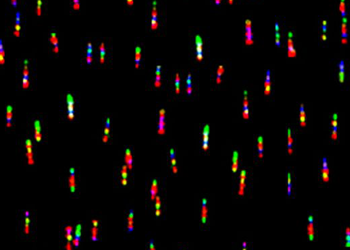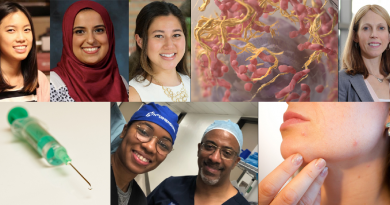Inside next-generation sequencing services at Baylor
 This feature is part of an ongoing series that focuses on VIICTR.org, highlighting clinical and translational research at Baylor College of Medicine.
This feature is part of an ongoing series that focuses on VIICTR.org, highlighting clinical and translational research at Baylor College of Medicine.
Gene sequencing has the potential to paint a molecular picture of an individual cancer and help researchers identify its origin, its potential for metastasis, its responsiveness to specific drugs, and the likelihood of its recurrence.
In this Q&A, Lisa D.White, Ph.D., core director of Baylor’s Genomic and RNA Profiling Core, addresses how their services are providing next-generation sequencing that helps researchers analyze and alter genomic changes that occur in the most prevalent human diseases.
What is the purpose of the Genomic and RNA Profiling Core, and how has it expanded since its inception?
When I started as core director in 2001, our purpose was to provide microarray technology to Baylor researchers. We spotted our own homemade microarrays then using robots. However, we struggled with data capacity because we could only handle files in the megabyte range. Since then, technology has evolved to the extent that we offer massively parallel sequencing technologies such as those in Baylor’s Human Genome Sequencing Center. Today, we are using microarrays and sequencing to perform genomic profiling of DNA/RNA, protein interactions, and genetic modifications across the genome.
When we purchased our first sequencer in 2009, it cost $1 million. Only 4 years later, we upgraded our sequencing equipment to the Illumina® platform, which allows us to handle more than 15 times the data for the same cost. The new platform generates about 1 terabase of sequencing information, so we can now produce the same data in one week that formerly took 13 days.
Who uses this core, and how do they benefit from it?
The best part of my job is that I get to interact with different researchers who are conducting very important research for Baylor. We work with several departments and groups to sequence the genes in cancer samples, stem cells, regeneration research samples, and samples of many different human diseases. We also work with researchers involved in the microbiome project to sequence different bacterial RNA transcriptomes.
In terms of benefits, we provide access to different types of high-throughput technologies that a typical researcher cannot afford to purchase and maintain alone. We also provide expertise in these types of technologies, so that researchers who are not involved in genomic science can use them. Another benefit is the support and advantages that the Core offers to researchers during funding competitions. When they apply for grants, it is helpful to show that they already have access to the newest and most cutting-edge technologies.
Do researchers have a clear understanding of what they need, or do they often rely on your expertise?
I would say most rely on our expertise. Researchers usually want to sequence some samples, so we talk about their needs and the research questions they want to answer. Sometimes cost is a factor, so we work together to determine the best experiment that is both affordable and gets them the results they need.
Is there any project that stands out as being particularly innovative or that resulted in a major breakthrough?
Although some researchers are interested only in basic research, most of the researchers who use our services are aware that translation to the bedside is the goal. For example, we helped Larry Chan, professor of endocrinology and molecular and human genetics at Baylor, with gene expression profiling, a technique that allows us to measure the activity of thousands of genes at once. Based on the results, he and his team were able to transform liver cells, induce them to produce insulin and “cure” diabetes in a mouse model. This work resulted in several published papers. Currently, Dr. Chan and his team are trying to translate their success into a human model.
Can you give us some examples of how the core has helped to promote scientific knowledge that would not have been possible without these resources?
There are about 160 principal investigators who use our core, so there are many examples of what can be achieved with our resources. We worked with one team who was investigating treatment response and breast cancer metastases. They used our core to profile animal models that can serve as a renewable tissue resource for preclinical studies. Another team used high-throughput transcriptome sequencing to identify a cancer-specific interchromosomal fusion gene that is found in a significant portion of ovarian cancer samples. Ultimately, this breakthrough will increase our understanding of ovarian cancer and improve the classification of its subtypes.
Want more? Read the complete interview.
Investigator interested in using the Genomic and RNA Profiling Core? Learn more.



